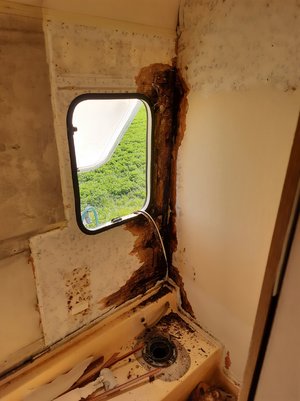Hi all. I hope it's the right section to post the question.
I have a 1989 Fiat Safariways with water damage on the back, in the bathroom precisely. I am at a good point in removing all the damaged wood. The question I have is... What to do after that? How do I fix the mess? The plan is to take it to someone competent to have it remake all the sealings after I've fixed it (it's protected from water). I "just" need to know how to proceed.
Attached is a pic of the bathroom (or what is left of it...)
I have a 1989 Fiat Safariways with water damage on the back, in the bathroom precisely. I am at a good point in removing all the damaged wood. The question I have is... What to do after that? How do I fix the mess? The plan is to take it to someone competent to have it remake all the sealings after I've fixed it (it's protected from water). I "just" need to know how to proceed.
Attached is a pic of the bathroom (or what is left of it...)













